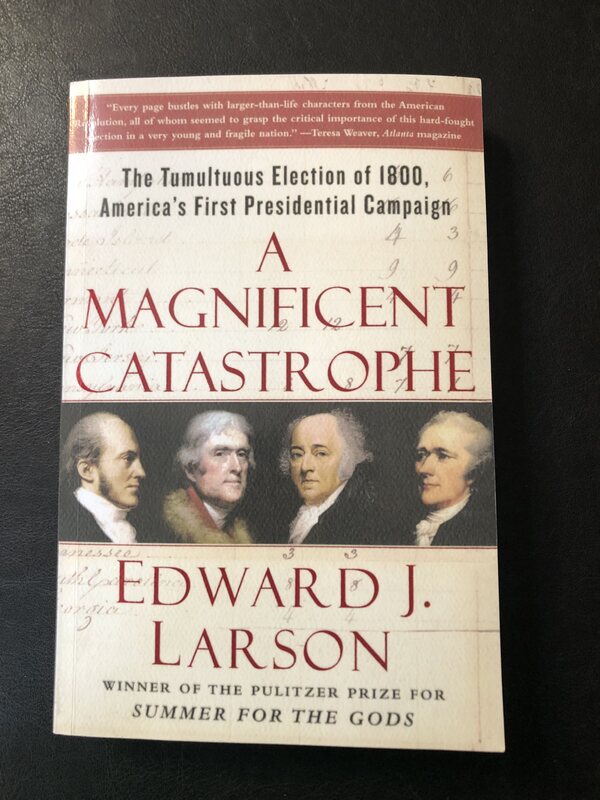Impact of Campaign Rhetoric and Issues in the Presidential Election of 1800: Adams v. Jefferson
Two men, John Adams and Thomas Jefferson, had a long-term friendship from the Colonial Era when they met in 1775 at the First Continental Congress and which carried on into the period of the Early American Republic during which they both died on the same day: July 4, 1826. But for a period from 1791 until 1812, they were estranged. Both men were first elected to be Vice President and then later President of the United States. And they ran against each other for the Presidency of the U.S. in 1800. Two other men, Aaron Burr and Alexander Hamilton, were bitter enemies. Each would play pivotal roles in deciding the outcome of the 1800 election.
The U.S. presidential election of 1800 is often described as the first contested presidential election and one of the most “tumultuous” elections in American history whose results made great differences to later political developments in this country. One major consequence, it was the end of period of predominance of the Federalist Party, which never really recovered from this election, both as “a political party and a persuasion”.[1]
This election was a reprise of the 1796 election between the incumbent President, John Adams (a Federalist), and the incumbent Vice President, Thomas Jefferson (a Republican), but with a different outcome, and is often cited as the beginning of the two-party political system in the U.S. In the prior election of 1796, multiple political parties were still too loosely constituted, thus lacking any kind of party or voting discipline.[2] One reason was the existence of personal and political tensions among elected officials and politicians attempting to sway state electoral contests.[3] In the final 1796 outcome, only the electors from eight states voted to elect the major party candidates (Adams/Pinckney or Jefferson/Burr) with 52 electors (out of the total of 136) not following party choices; thirteen other candidates received electoral votes who had either national or regional support from a multitude of political parties. Often as a sign of protest of the establishment candidates.
In the intervening period between elections, the two-party system that exists today is established; albeit with different election issues, methods and political parties in 1800 (i.e., only the Federalist and Jeffersonian Republicans).[4] The 1800 election was also the only time when the President and Vice President from the same administration run against each other, another sign that this was truly an extraordinary election. This essay will seek to answer the question: How did campaign rhetoric and issues impact the election of Thomas Jefferson to be President in 1800, resulting in the reversal of the results of the prior Presidential election?
Having just endured the recent contentious Presidential election in 2020, with similar regional divisions among states, propaganda smear campaigns created by both parties, and jockeying for electoral votes, makes the 1800 Presidential election look recognizably modern.
[1] Elkins, et al, The Age of Federalism: The Early American Republic, 1788-1800, Page 691
[2] Ferling, Adams vs. Jefferson : The Tumultuous Election Of 1800, Page 87
[3] Freeman, Affairs of Honor: National Politics in the New Republic, Pages 222-223
[4] Although many would argue that the Jefferson Republicans evolved into modern Democratic Party.
